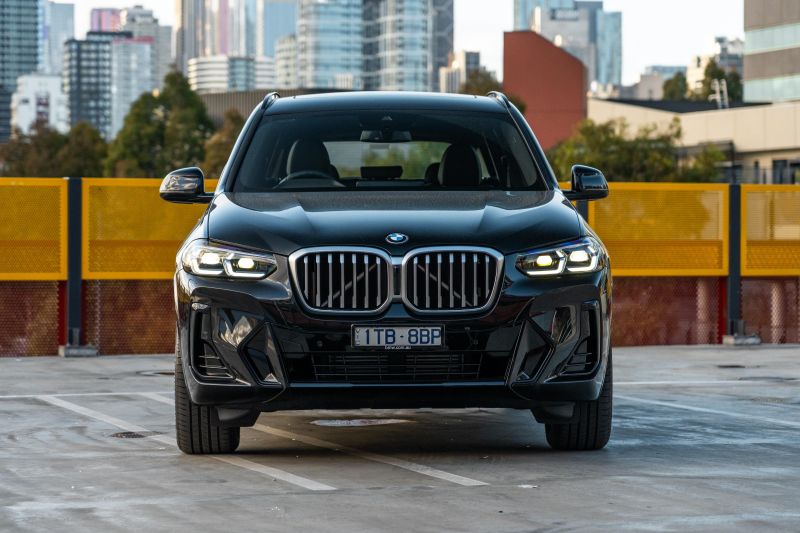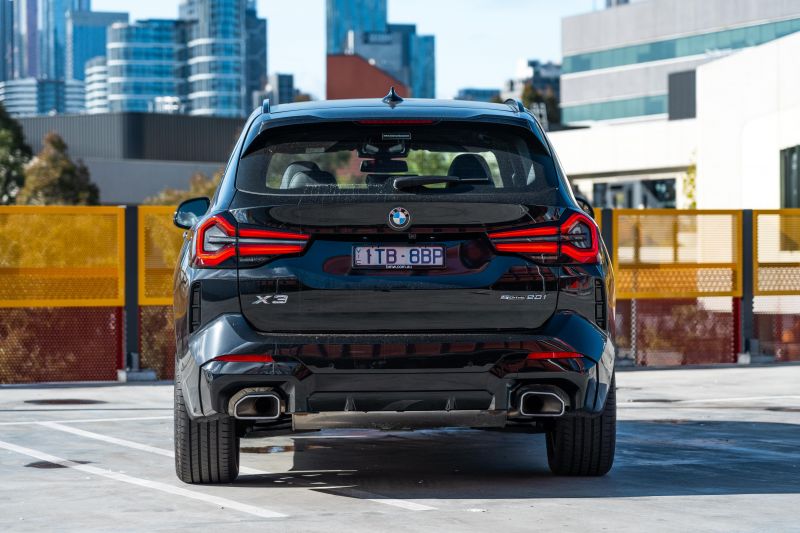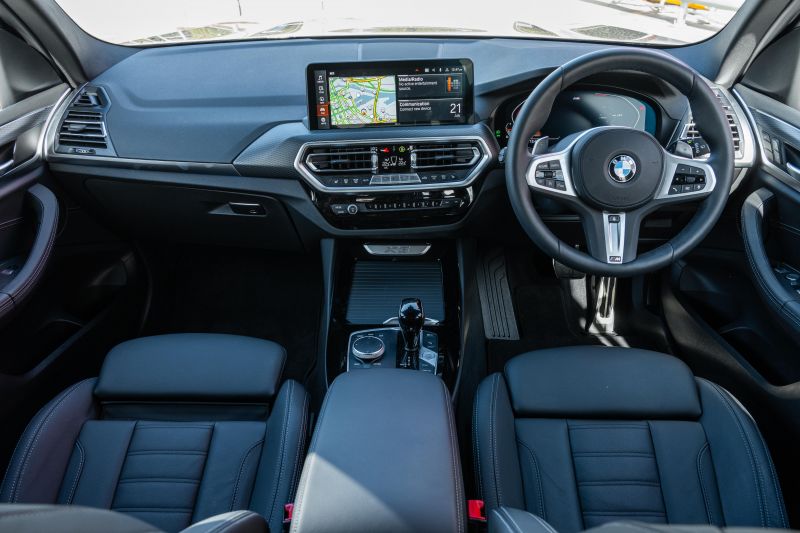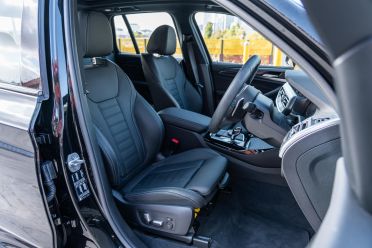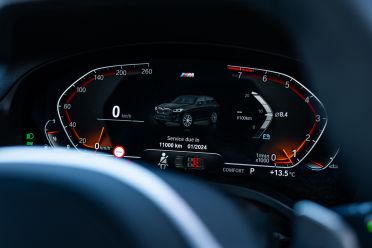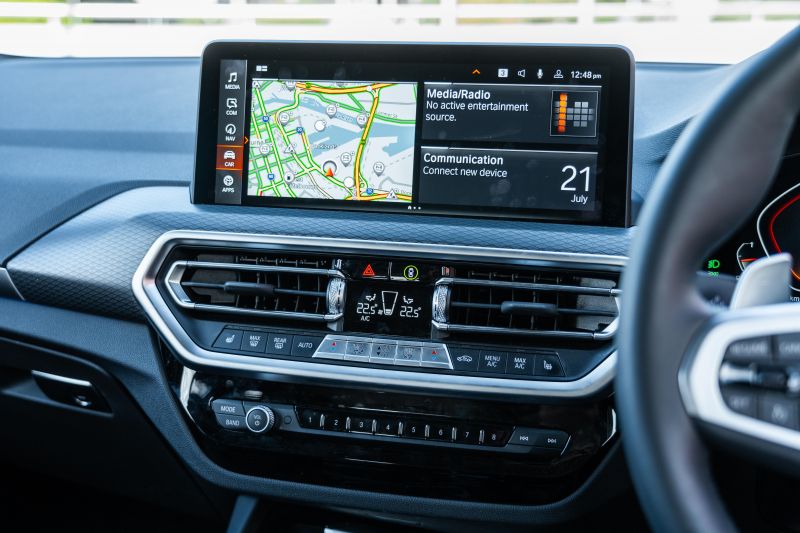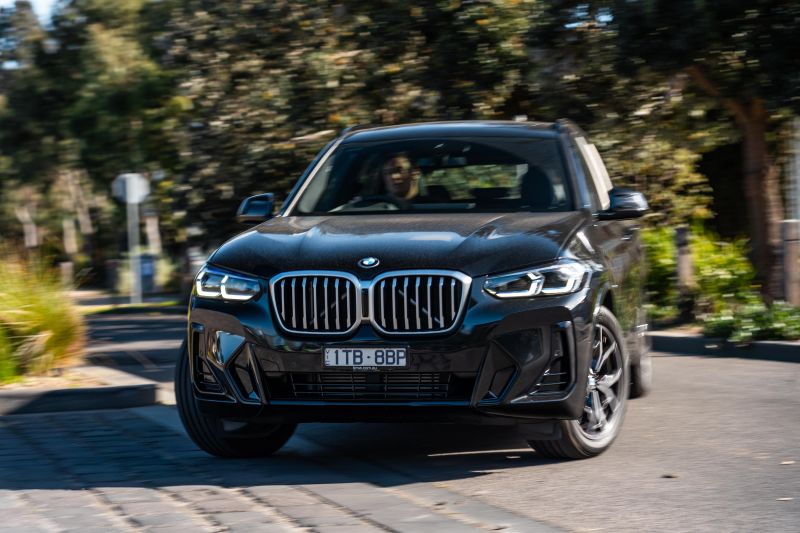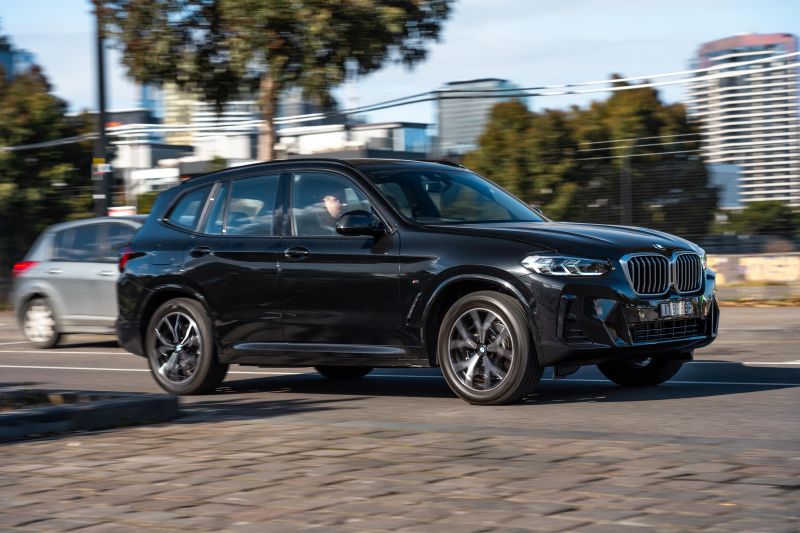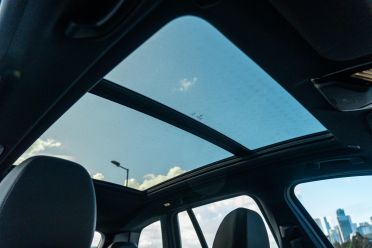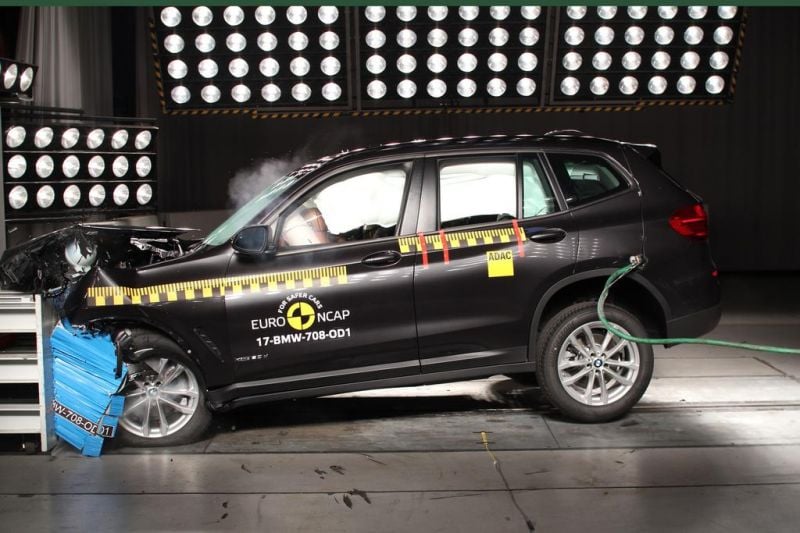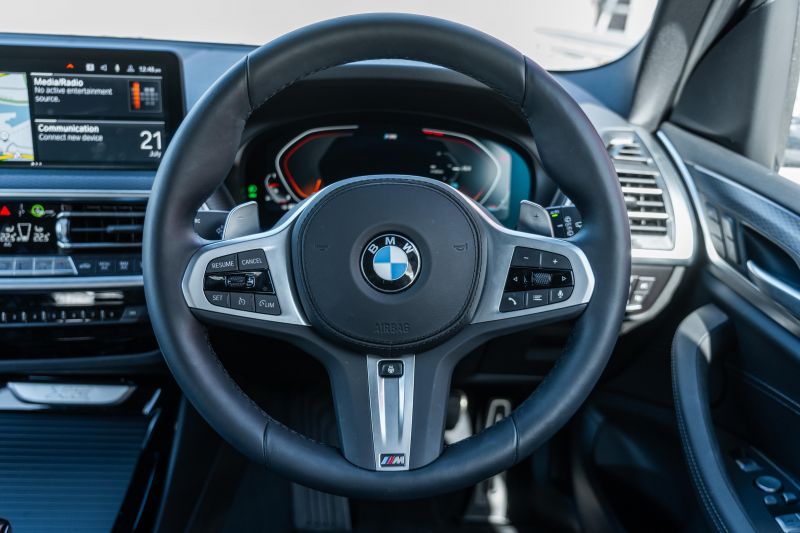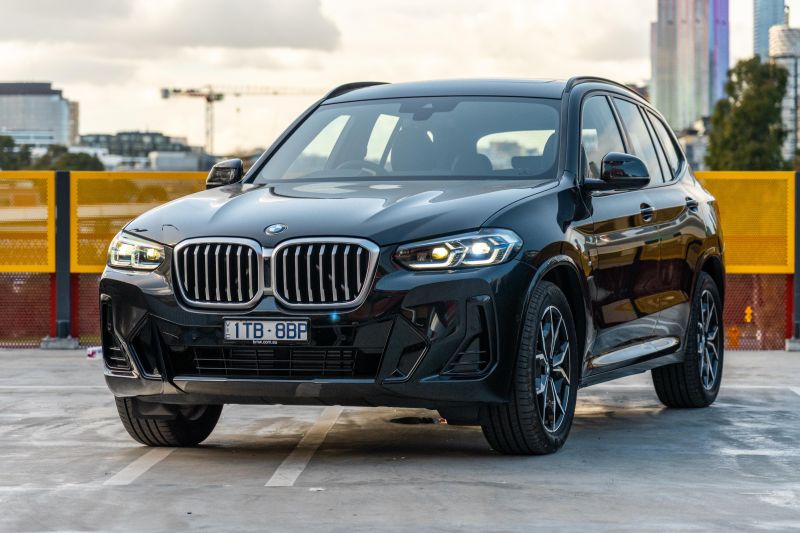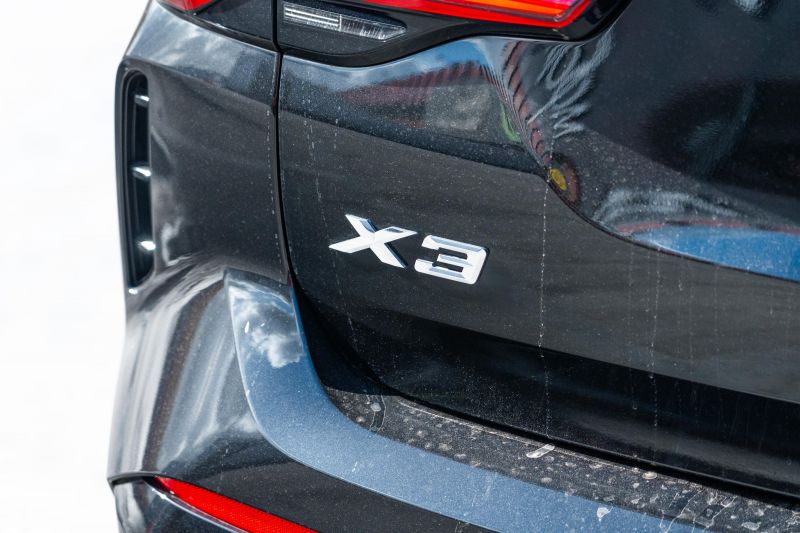Entry-level luxury cars used to be stripped out, basic affairs designed to lure buyers into showrooms for an upsell. That’s changing, though.
The entry point to the BMW X3 range in 2023 features most of the equipment offered on more expensive models.
It doesn’t have a list of options longer than War and Peace, and it doesn’t feature a gutless engine incapable of hauling it around with people on board.
So, what’s the catch? Well, it’s not what you’d call cheap anymore.
BMW has never been in the business of selling its cars cheap, but the new X3 range now starts well above $80,000 before on-road costs – and that’s for the rear-wheel drive model on test here, not a more capable all-wheel drive setup.
No matter how alluring the BMW badge is, that’s a lot of money for an entry level SUV. How does it stack up?
How much does the BMW X3 sDrive20i cost?
This is the cheapest model in the BMW X3 range, with a starting price north of $80,000 before on-road costs. If you needed proof inflation is biting, there it is.
Our tester was also fitted with the Visibility Package ($5400, not essential) and the Comfort Package ($1200, essential), bumping its as-tested price to $87,300 before on-road costs.
Once upon a time, optioning a base BMW would bring it into line with the more powerful model above it in the range. That’s not the case anymore; even with all the extra kit fitted the X3 sDrive20i is almost $10,000 less expensive than the all-wheel drive xDrive30i.
Price-wise, it aligns with the more powerful, all-wheel drive Audi Q5 45 TFSI quattro Dynamic Black ($85,669) or the Genesis GV70 3.5T AWD Sport ($83,070).
Mercedes-Benz doesn’t offer an entry-level GLC anymore, with a starting price above $100,000 before on-roads for the GLC 300 4Matic.
2023 BMW X3 pricing:
- BMW X3 sDrive20i: $81,700
- BMW X3 xDrive20d: $84,700
- BMW X3 xDrive30i M Sport: $96,500
- BMW X3 xDrive30d M Sport: $102,900
- BMW X3 xDrive30e M Sport: $110,400
- BMW X3 M40i: $125,400
- BMW X3 M Competition: $175,300
All prices exclude on-road costs
What is the BMW X3 sDrive20i like on the inside?
The current BMW X3 has one of the biggest, most practical cabins in the mid-sized SUV class.
With big windows, a high roofline, and plenty of space between the front seats, it could be confused for a bigger car at first glance. That’s no accident, given the X3 is dimensionally very similar to the first-generation X5.
The driving position offers a panoramic view of the road ahead, but the seats drop low enough and offer enough bolstering to still hold you in place.
Tall or short drivers won’t have any trouble getting comfortable, and the M Sport steering wheel is a quality item. The optional heated seats and steering wheel, as well as the panoramic sunroof fitted to our tester really elevate the cabin.
This doesn’t look or feel like an entry-level car behind the wheel, although it wouldn’t really be able to get away with a cheap and nasty cabin anyway given it’s now an $80,000 car before on-road costs. Also worth considering is the fact the sunroof is tied up in a $5400 package, and is best avoided if you’re trying to squeeze maximum bang-for-buck from your base BMW.
The heated seats on the other hand are a must-have… if you’re silly and live somewhere cold like me.
All-round visibility is excellent thanks to those oversized windows, and the cameras, sensors, and 3D surround-view built into the latest iDrive system make the X3 a cinch to place in tight garages or parking spots.
The technology in the updated X3 is excellent. BMW OS7.0 has been usurped in the latest BMW models, but the system is up there with the best in the business – although at this price, it really should be right on the bleeding edge.
It responds to touch, voice, and inputs from the classic BMW controller on the transmission, and the big on-screen tiles are easy to discern on the move. BMW was the first to offer wireless Apple CarPlay, and its system remains one of the most reliable.
BMW has some work to do on its digital dashboard, though, which can’t match the latest Audi Virtual Cockpit for customisability or clarity. Our tester also had some misaligned trim pieces around the climate controls, which is not good enough in a luxury SUV.
There’s plenty of storage up front, from the wireless phone charger beneath the dashboard to the deep space beneath the central armrest.
The rear seats in the X3 are excellent. Headroom is standout, even with the panoramic sunroof fitted to our tester, and there’s enough legroom for tall teens to get comfortable.
You’ll get three people across in comfort thanks to the broad bench, and the door opening is broad enough to make loading child seats easy. If you do need to slot a child seat behind a taller driver, however, it may be worth looking at the X5 as there’s limited space behind my 6’7 frame.
There are air vents back there, standalone climate controls, dual USB-C ports, and a fold-down central armrest with cupholders.
You get ISOFIX points on the outboard rear seats, along with three top-tether points. The rear bench folds 40/20/40, and gets pretty close to completely flat.
The boot opening itself is wide, and features netted pockets tucked into its sides. Claimed space is 550 litres with the rear seats in place, expanding to 1600 litres with them folded.
What’s under the bonnet?
Power in the BMW X3 sDrive20i comes from a 2.0-litre turbocharged petrol engine making 135kW of power and 300Nm of torque, sent to the rear wheels only.
Unlike more expensive models, the least powerful X3 isn’t available with all-wheel drive. It’s hooked up to an eight-speed automatic transmission.
The 100km/h sprint takes a claimed 8.2 seconds, and claimed fuel economy is 7.3 litres per 100km on the combined cycle. We saw 8.7 litres per 100km on a week skewed towards city driving.
The X3 has a 65L fuel tank, and drinks 95 RON premium unleaded.
How does the BMW X3 sDrive20i drive?
If all you do is drive in the city, the X3 sDrive20i will do pretty much everything you need without fuss.
It’s not as powerful as the 30i, but the turbocharged engine has enough get up and go to handle day-to-day duties. It gets off the mark quickly, and when you put your foot down it offers a decent shove in the back.
The eight-speed automatic transmission shuffles through the gears so smoothly you don’t really know – or need to know – which gear it’s actually in at a given time.
Some drivers aren’t keen on auto start/stop, but the BMW system is one of the best. There’s no awkward jerking or jumping, it just shuts down smoothly and fires up quietly.
It even sounds good – BMW has tuned it to let rip with a fruity rev when you press the start button, and it has a sporty growl when you’re in a hurry.
Even though the sDrive20i rides on smaller wheels than more expensive models, it feels firm in the city. You’ll notice potholes and sharp-edged speed bumps, and roads with lots of little pimples on them can make it feel a bit busy.
You won’t be needing a trip to the physio, but it feels a bit tauter and sportier than the equivalent Audi or Volvo in the city. It’s nicely settled on the highway, and there’s very little road noise from the tyres or wind around the mirrors on average Australian roads.
You don’t really notice the fact the X3 sDrive20i is rear-wheel drive in daily driving. Even in wet conditions it has plenty of traction, and there’s not really enough grunt to break the rear loose if you put your foot down anyway.
So, where does the less powerful engine in the base X3 cause problems? It’s noticeable at higher speeds.
Loaded up with four adults and their luggage, the sDrive20i doesn’t accelerate as confidently between 80km/h and 100km/h on the highway as its bigger brothers, which means you’ll need a longer run-up for overtakes on single-lane country roads.
The lack of all-wheel drive also means this car won’t be as capable on gravel fire trails, or if you’re headed to the snow. In Australia, there are times when you’ll need to fit chains to two-wheel drive cars but not AWD or 4WD ones to visit the snowfields – and in those situations, all-wheel drive is worth its weight in gold.
One of the big trade-offs you make when opting for the sDrive20i is losing adaptive cruise control.
The system in the base model won’t maintain a gap to the car in front, which means you can’t relax quite as much on highway drives as would otherwise be the case.
You get lane-keeping assist, but no active lane-centring which means the car won’t actively steer to keep you centred on highway runs. If you do spend a lot of time on the open road, they’re features worth having.
What do you get?
X3 sDrive20i + xDrive20d highlights:
- 19-inch alloy wheels
- Run-flat tyres
- Aluminium roof rails
- Adaptive LED headlights
- LED tail lights
- Rain-sensing wipers
- Power-folding side mirrors
- Heated
- Anti-dazzle (driver’s side only)
- Auto-dipping (passenger’s side only)
- Power tailgate
- 12.3-inch digital instrument cluster
- 12.3-inch touchscreen infotainment system
- Wireless Apple CarPlay, Android Auto
- Satellite navigation
- DAB+ digital radio
- 6-speaker sound system
- Wireless phone charger
- 3yr ConnectedDrive Services subscription
- Tri-zone climate control
- Ambient lighting
- Electric parking brake
- Keyless entry and push-button start
- Sport leather-wrapped steering wheel
- Black ‘Sensatec’ leatherette upholstery
- Power-adjustable front sport seats with driver memory
Options fitted to our tester include the Visibility Package ($5400)
- Metallic paint
- Panoramic glass sunroof
- BMW Laserlight headlights
And the Comfort Package ($1200)
- Heated front seats
- Driver lumbar support
- Heated steering wheel
Is the BMW X3 sDrive20i safe?
The pre-facelift BMW X3 managed a five-star ANCAP safety rating based on tests conducted by Euro NCAP in 2017.
It received scores of 93 per cent for adult occupant protection, 84 per cent for child occupant protection, 70 per cent for vulnerable road user protection, and 58 per cent for safety assist.
This five-star ANCAP rating applies to all variants except the xDrive30e plug-in hybrid – which remains unrated.
Standard safety features include:
- Autonomous emergency braking (AEB)
- Lane departure warning
- Lane change warning
- Cruise control
- Rear-view camera
- Reverse parking sensors
- Reversing assistant
How much does the BMW X3 sDrive20i cost to run?
The BMW X3 is backed by a five-year, unlimited-kilometre warranty like the broader BMW range.
BMW Australia offers Service Inclusive pre-paid packages that cover the first five years or 80,000km – whichever comes first.
The standard Service Inclusive Basic package costs $2400 for the core X3 range.
CarExpert’s Take on the BMW X3 sDrive20i
If you want a practical, comfortable luxury SUV, the X3 has plenty to offer.
Even if you don’t tick any options boxes the sDrive20i doesn’t exactly feel like a pared-back base model, and with the Comfort Package it doesn’t really want for anything.
Rear-wheel drive is going to give most buyers what they need in the city, and the less powerful 2.0-litre engine has enough punch to do most jobs without too much fuss. If you’re headed for the hills regularly, we’d recommend looking at all-wheel drive and more power in the xDrive30i.
There’s also the issue of the price. Although it’s well equipped, the fact you’re more than $85,000 before on-road costs for a base X3 with a few options is a bit shocking given the same car cost $80,000 in 2022, and just over $75,000 in 2021.
If it’s value for money you’re after, it’s worth taking a look at the Lexus NX or Volvo XC60 alongside the X3 to compare how much grunt you get for your money.
Click the images for the full gallery
MORE: Everything BMW X3

